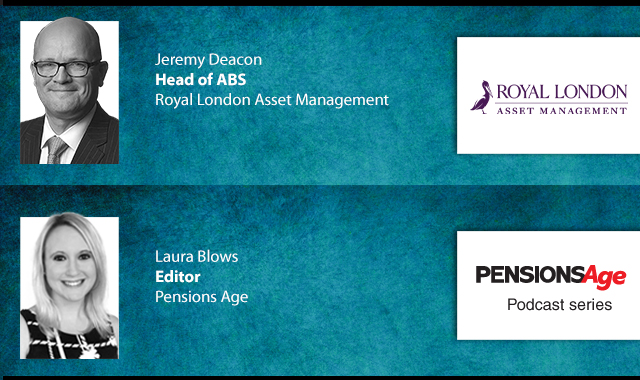Mark Duke explains what a successful pensions de-risking plan should look like
De-risking is a slogan applied to many of the actions being taken by trustees and sponsors running defined benefit (DB) pension schemes. But, like all slogans, it conceals a diverse and complex pension landscape.
The rationale for de-risking is clear. Trustees (and the Pensions Regulator) would generally prefer schemes to take less rather than more risk and also to have a fund of sufficient size so that the scheme could support itself with little reliance on the employer. This is an aspiration shared by many companies and their shareholders.
What this ideal 'de-risked' state looks like will differ between schemes. Also, when aspiring to reach this position, each scheme has to decide, depending on its own circumstances, on the most efficient forms of risk-taking and the most opportune times to de-risk as few employers can afford a headlong rush to take risk off the table entirely.
In 2011 the successful de-riskers will tend to have the following characteristics:
• A clear understanding of the aspirational end point and will incorporate this as an integral part of the funding and investment strategy for the pension scheme.
• A focus on understanding and measuring the risks in the pension scheme including:
– Measuring the overall risk exposure and the individual components of this. This will increasingly include techniques for measuring exposure to longevity and mortality risks.
– Understanding the risk tolerance of the employer and using this to define acceptable levels of risk within the scheme. This will influence decisions about, for example, the exposure to equity markets.
– Articulating and reconciling the employer's and trustees' attitudes to risk. The employer's preferences may be grounded in (shorter-term) tangible metrics like the impact on reported earnings or credit ratings/borrowing costs, whereas from a purely economic point of view the pension scheme may be able to take a longer-term perspective. Also the employer will know whether it has assets on its balance sheet that could be used to provide contingent security to the trustees and therefore influence the extent to which the trustees are prepared to take risk.
– Looking at the most efficient ways of hedging those risks which it is agreed need to be addressed and the impact on existing hedging strategies. This should include decisions regarding the extent to which the scheme wants to diversify its portfolio with the intention of getting more return for a given risk budget.
• Plans in place to act when conditions are favourable. Whilst the future is uncertain, the purpose of continuing to take risk is a hope that gains will be secured that can be used to pay for further hedging. The trustees need to know what to do as and when gains (or losses) emerge. This includes:
– Being able to monitor gains and losses in close to 'real time'.
– Already having an idea of the price of de-risking, for example the cost of securing a hedge.
– Knowing whether the conditions are such that they should de- or re-risk.
– Having the resources, data and governance needed to be able to act quickly – good ideas count for nothing without an implementation plan and sufficient resources.
• Include liability management techniques in the de-risking agenda. This could involve the re-design, or closure, of legacy benefits as well as making offers to scheme members that effectively pay the member to take on risks that would otherwise be borne by the scheme.
• Understand the potential for opportunism. This could be a first mover advantage associated with a new product or the chance to exploit what looks like a market anomaly.
De-risking may be just one of the items on a long and complex agenda of pension issues which need to be considered. With the limited trustee and employer resources available, the ability to execute the most appropriate risk management plan may be restricted for many schemes.
2011 could be the year when these schemes focus on setting strategy and creating a risk plan, and then delegate implementation seeking third party support to oversee the implementation process.
Mark Duke is head of settlement consulting at Towers Watson
Latest News
-
One year countdown to final dashboards connection deadline begins
-
Govt must make 'major changes' to IHT/pension rules, HoL committee told
-
Seabourne Pension Scheme agrees full scheme buy-in with Just Group
-
Over half of global pension holdings already exposed to physical risk
-
DC providers strengthen ESG focus but data challenges persist
-
European pension funds back recommendations for more responsible mining sector
Private markets – a growing presence within UK DC
Laura Blows discusses the role of private market investment within DC schemes with Aviva Director of Investments, Maiyuresh Rajah
The DB pension landscape
Pensions Age speaks to BlackRock managing director and head of its DB relationship management team, Andrew Reid, about the DB pensions landscape
Podcast: Who matters most in pensions?

In the latest Pensions Age podcast, Francesca Fabrizi speaks to Capita Pension Solutions global practice leader & chief revenue officer, Stuart Heatley, about who matters most in pensions and how to best meet their needs
Podcast: A look at asset-backed securities

Royal London Asset Management head of ABS, Jeremy Deacon, chats about asset-backed securities (ABS) in our latest Pensions Age podcast
© 2019 Perspective Publishing Privacy & Cookies










Recent Stories